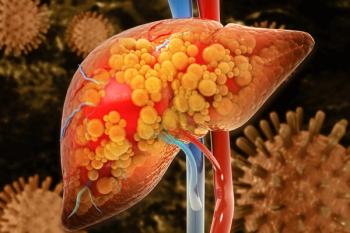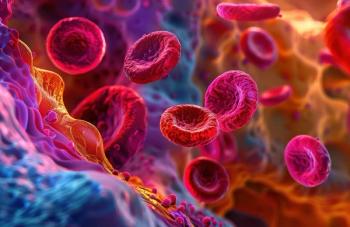
Quest Moves to More Accurate, Nonfasting Cholesterol Test Method
As physicians treat patients with elevated low-density lipoprotein (LDL) cholesterol more aggressively with PCSK9 inhibitors and high-efficacy statins, a test that is more accurate at lower levels is essential.
Quest Diagnostics has moved all its tests for levels of low-density lipoprotein (LDL) cholesterol to a modern, more accurate method that does not require patients to fast, the company announced last week.
The company is converting from the Friedewald calculation, a standard used since 1972, to a method based on work by cardiologist Seth Martin, MD, of Johns Hopkins School of Medicine. This comes after a licensing agreement between Quest and Johns Hopkins University, according to
Switching to a modern calculation is important in light of new therapies that allow physicians to lower LDL cholesterol to levels never imagined when the Friedewald calculation was developed. These include the proprotein convertase subtilisin/kexin type 9 (PCSK9) inhibitors, a powerful class of injectable drugs approved in 2015 that lowered LDL cholesterol up to 60% in clinical trials.
As Eliot A. Brinton, MD, FAHA, FNLA, president of the Utah Lipid Center in Salt Lake City, Utah, explained in an interview with The American Journal of Managed Care®, the lower the LDL cholesterol level, the less accurate the Friedewald calculation becomes. If the patient doesn’t fast before the test, the results are even less reliable. But the need for an overnight fast usually means the patient must make 2 trips: one each for the blood draw and to see the physician.
Brinton cited several factors that have converged to drive the need for a new, more accurate cholesterol test that doesn’t require fasting:
- In 2013, the American College of Cardiology and the American Heart Association issued new treatment guidelines that had the effect of recommending that more people take statins, and that higher doses be used.
- As higher-efficacy statins like Zocor (simvastatin), Lipitor (atorvastatin), and Crestor (rosuvastatin) have come off patent, Brinton said, it has become easier for physicians to treat patients’ cholesterol levels more aggressively, because this more effective therapy is now more affordable.
- As Zetia (ezetimibe) has also recently come off patent, physicians have further ability to lower cholesterol with generic medications.
- Availability of PCKS9 inhibitors over the past couple of years has made it even easier to treat cholesterol levels far lower than ever before.
- In addition, he said, results just presented at the European Society of Cardiology meeting have answered a key question in the use of these drugs: is there an LDL-cholesterol level below which there is no additional benefit of treatment, or below which risks outweigh benefits? These results, just published in The Lancet, show that achieving LDL levels well below currently recommended goals further reduced heart disease risk without causing harm.
“We’re treating LDL cholesterol more aggressively, so the inaccuracy of the old calculation becomes even more important,” Brinton said. “A more accurate test at a lower level is a big deal.”
Brinton called the new testing methodology “a very nice breakthrough” that fits nicely with the reality of what’s happening in patient care. The Friedewald calculation was useful in its time, but as lipidologists find extra benefits from lower LDL cholesterol levels, an update of the old method was needed.
“It’s a little embarrassing that we were asking an overly simplified calculation from the 1970s to continue to be our 'go-to' method as lipidology has become so much more sophisticated 4 decades later,” he said. “This step forward is a very intelligent use of resources to give us a much better number in a very straightforward manner.”
Finally, Brinton said the new calculation offers advantages for patients who have naturally high triglycerides or whose triglycerides are elevated because they had not fasted for the lipid test. “Even modest triglyceride elevations will falsely decrease LDL cholesterol when using the old Friedewald calculation,” Brinton said in an e-mail.
As high triglycerides become more common with rising obesity and diabetes rates, Brinton said having a new calculation is valuable, because the field of lipidology has gained a stronger recognition of how high triglyceride levels increase the risk for heart disease and stroke.
Newsletter
Stay ahead of policy, cost, and value—subscribe to AJMC for expert insights at the intersection of clinical care and health economics.












































